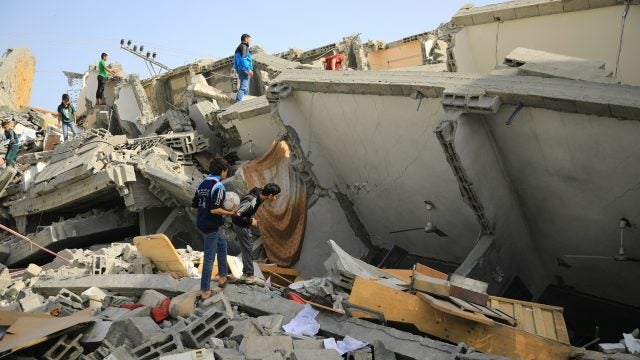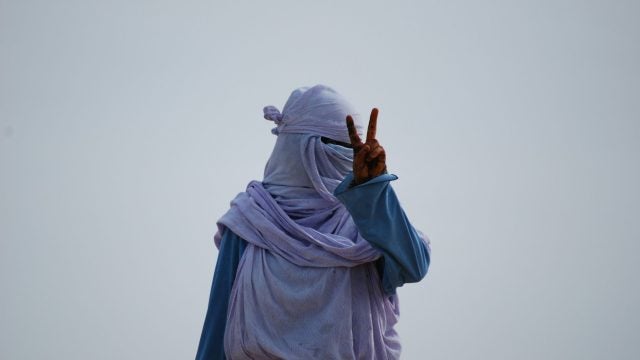
Title: Refugees and Forced Migration: Five Minutes with Professor Susan Martin
On February 22, Georgetown student Nora McGann sat down with Associate Professor of International Migration Susan F. Martin to discuss rights and challenges for refugees and internally displaced persons.
[GJIA]: Is there any feeling that the 1951 UN Convention needs to be updated or reviewed?
[SFM]: I think there is growing recognition that there are many gaps and so there has been an effort over the last 20 years to fill them. One gap is that people flee internally, which wasn’t covered under the ’51 Convention. This led to the promulgation of guiding principles on internal displacement that say what are the responsibilities of governments to IDPs [Internally Displaced Persons], what are their rights and what is the international community’s role. Then it was clear that in many countries that do a refugee status determination there is a mechanism for granting asylum to those who flee a well-founded fear of persecution but not a well-founded fear of conflict or generalized violence.
So there’s been a lot of effort over the last 20 years to try to provide some type of subsidiary protection or complementary protection or temporary protection to make sure that people aren’t deported to countries in conflict. That gap is still there, but there’s been progress in filling it. Now the focus is shifting to natural disasters, concerns about climate change, and what happens to people who are rendered in dangerous circumstances because of those situations. There is also attention to addressing the flight of migrants who are working in countries experiencing political violence, as we saw in Libya and Cote d’Ivoire last year. So there’s a sense now that a lot of people are forced to move for reasons beyond their control that don’t fit the 1951 Convention.
[GJIA]: Forced migration has often been associated with war or civil unrest. Are there new causes of forced migration, such as climate change?
[SFM]: It’s not so much that these are new but they’re taking place in a different way. One of the effects of climate change appears to be the increasing frequency and intensity of natural hazards, such as hurricanes, cyclones, etc. So, communities that were resilient in dealing with the occasional hurricane have a much more difficult time now. People who might have previously been displaced for short periods, but then could go back home and rebuild, now worry that a few months later the whole process is going to start all over again.
Further, they are increasingly facing situations in which it is not really clear that rebuilding makes sense. So, what we’re positing is that as climate change intensifies, so too will these displacements and the numbers will start to get larger because of the intensity and frequency of the hazards. That means that more people are likely to be displaced over a long-term or even permanently. And that creates challenges. In some of the worst-case examples—for example, in some of the small island states–there may not be territory left to rebuild given rising sea levels.
Then the question becomes what will happen to the population there because they’re going to be in need of permanent relocation. The international community is just starting to try to think about what the best policies are for handling those situations. Up until very recently migration was seen as a failure of adaptation to the changes that climate changes are bringing. But now increasingly there are people who are recognizing that migration itself is an adaptation strategy. Rather than wait for this to happen in a crisis environment we should be doing the planning and thinking about what are the best ways to help people to relocate when that makes sense as a way to adapt to change.
[GJIA]: What does ‘refugee protection’ entail?
[SFM]: The term usually referred to legal protection, that is, recognition of people as refugees, working with the host government to ensure that they would not be forcibly returned to their home country and ensuring that the governments were abiding by the provisions of the Refugee Convention, specifically, but even in cases where governments hadn’t ratified the Refugee Convention, working to ensure that more general human rights provisions apply to refugees.
Over time protection has come to have a much broader definition, particularly since it also applies to internally displaced persons, so you’re talking about protection of citizens by their own government. Increasingly it refers to physical protection, making sure that people aren’t attacked, that they have a decent place to live in, that government or agencies abided by certain standards in terms of the the number of calories that people get, the type of shelter.
It is a much broader rights agenda than the narrow definition of a refugee. A lot of it is driven by a concern about making sure that protection addresses the needs of particularly vulnerable populations, thinking about what children need, whether they are in families, separated or unaccompanied, women heads of households, elderly, disabled, adolescent boys who may have very acute protection problems because they may be subject to recruitment to forcible insurgencies, things of that sort. It’s not saying that there is one level of protection for everyone meaning that we want a government to recognize them as refugees, but it’s saying what are the special needs, what are the vulnerabilities, and what do we need to do to protect people’s rights and their safety and security.
. . .
This interview was conducted by Nora McGann, a first year student in the Masters of Science in Foreign Service program at Georgetown University and editorial assistant for the Georgetown Journal.
Susan Martin is the Donald G. Herzberg Associate Professor of International Migration and serves as the Executive Director of the Institute for the Study of International Migration in the Edmund A. Walsh School of Foreign Service, Georgetown University. Professor Martin has authored Refugee Women, as well as numerous monographs and articles on immigration and refugee policy.
Image Credit: Adam Jones, Ph.D., CC BY-SA 3.0, via Wikimedia Commons
This is an archived article. While every effort is made to conserve hyperlinks and information, GJIA’s archived content sources online content between 2011 – 2019 which may no longer be accessible or correct.
Recommended Articles

This piece examines the UK government’s proscription of Palestine Action under the Terrorism Act, situating it within a broader trend of shrinking space for public dissent. It argues that the…

This article analyses the distortions of the International Humanitarian Law (IHL) notion of proportionality in the context of the Israel-Gaza war. It discusses Israel’s attempts to reinterpret proportionality to justify…

The escalating women’s rights crisis in Afghanistan demonstrates a gap in international legal protections of the rights of women and girls. The international community should fill this gap by making…